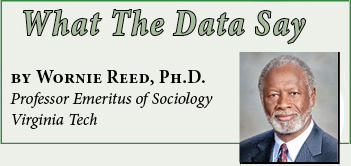 There are many stories of heroes in the Civil Rights Movement of the 1960s. One of my favorites concerns Diane Nash and the Freedom Rides.
There are many stories of heroes in the Civil Rights Movement of the 1960s. One of my favorites concerns Diane Nash and the Freedom Rides.
The Freedom Rides, organized by James Farmer of the Congress of Racial Equality (CORE), involved civil rights activists riding interstate buses through the segregated Southern United States in 1961 to challenge the non-enforcement of Supreme Court rulings against segregation on public transportation, facing violent backlash from mobs in various Southern towns, which ultimately led to the federal government taking action to enforce desegregation on interstate travel.
The original group of 13 Freedom Riders—seven African Americans and six whites—left Washington, D.C., on Greyhound and Trailways buses on May 4, 1961. Their plan was to reach New Orleans, Louisiana, on May 17 to commemorate the seventh anniversary of the Supreme Court’s Brown v. Board of Education decision, which ruled that segregation of the nation’s public schools was unconstitutional.
The group drew little notice as they traveled through Virginia and North Carolina. However, the Riders faced violence in South Carolina, as John Lewis and two others were beaten in Rock Hill, S.C. The next stop, Atlanta, was uneventful. However, on their way to Birmingham, the group was attacked by a mob of over 100 members of the Ku Klux Klan in Anniston, Alabama. The attackers slashed the tires, smashed the windows of the Greyhound bus, and set it on fire.
The Trailways bus was also met by violence in Anniston, with three people injured. It continued to Birmingham, where the police did not act to prevent the violence that ensued, which severely injured some of the riders. No one was arrested, but twelve people were taken to the hospital.
Diane Nash and her colleagues in the Nashville Student Movement were following these events in detail. She called Farmer, who had gotten off the bus in Atlanta after his father’s death. Nash offered their support:
“Your group of Freedom Riders is so badly chewed up they can’t go on now. Would you have any objection to the Nashville Student Movement, which is now SNCC, going in and taking up where CORE left off?”
Farmer responded by warning her it was too dangerous. She replied, “We fully realize that, but we can’t let them stop us with violence. If we do, the Movement will be dead.” Farmer tentatively agreed.
Nashville Student Movement members, now SNCC, went to Birmingham to continue the ride, insisting that Nash stay behind to avoid arrest and to be able to coordinate things.
With the escalation of violence, Attorney General Bobby Kennedy sent his assistant, John Seigenthaler, to Birmingham to survey the situation and to persuade the youth to call off their plan to continue the bus rides, “Do they know they can be killed?” When Seigenthaler informed Nash of this danger, she replied, “Sir, we have all made out our last will and testament.”
The police detained the group from Nashville, along with John Lewis and a few others from the original group. After a couple of days, the police took them in the middle of the night to the Alabama/Tennessee border and dumped them out on the highway.
A local black family took them in for the night. They found their way back to Birmingham and began waiting for a willing bus driver.
The next stop of the Freedom Ride for this new group of 19 protesters (16 black, 3 white) was Montgomery. As soon as they stepped off the bus, hundreds of Klansmen brutally attacked the riders.
Civil rights leaders — James Farmer, Martin Luther King, and Wyatt Tee Walker–came to Montgomery to support the students and assess the situation. The coordinator, 21-year-old Diane Nash, also came.
More than a thousand supporters met with these leaders at Ralph Abernathy’s church, which was surrounded by a white mob numbering in the thousands. King summoned help from Attorney General Kennedy, who sent federal marshals to disperse the mob and suggested a cooling-off period.
King and others tried to persuade the youth to heed Kennedy’s request. Diane Nash responded, “No, the Nashville Student Movement wants to go on. We can’t stop now, right after we’ve been clobbered.”
They continued to Jackson, Mississippi, joined by hundreds of youths from across the country, who filled the city jails and other holding facilities, bringing a national spotlight to the matter.
“Just, who the hell is Diane Nash?” questioned Robert Kennedy. More on that in the next article.





